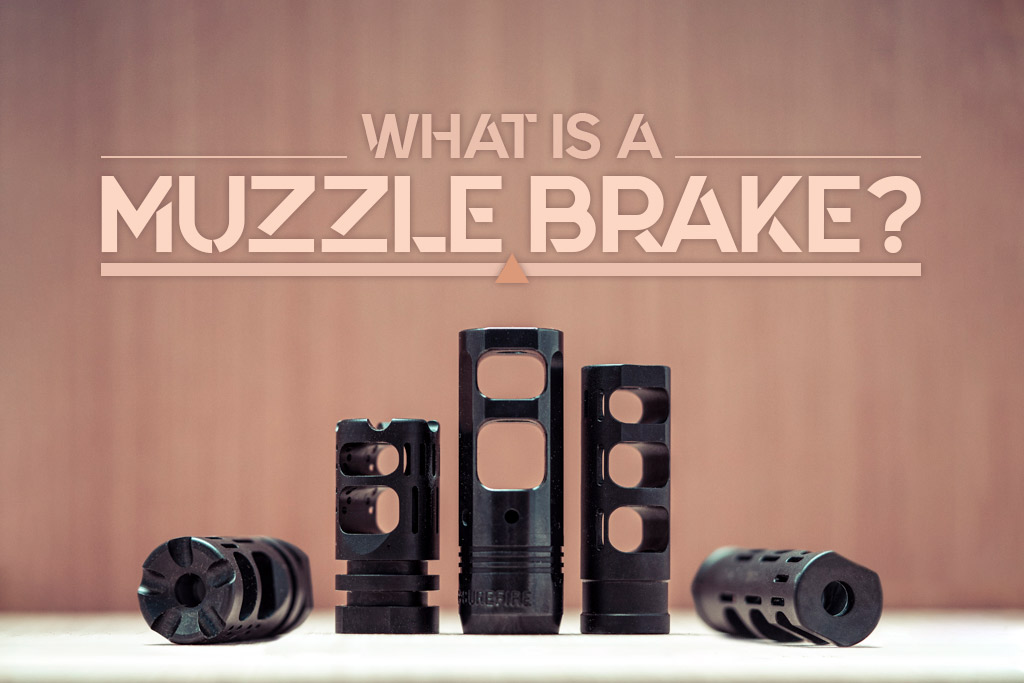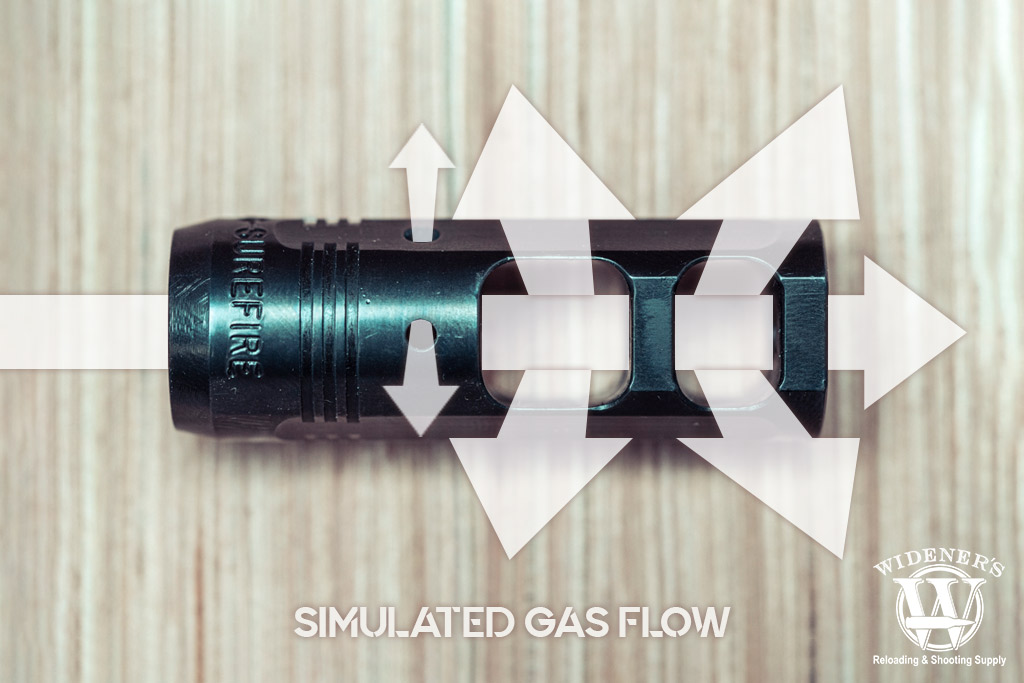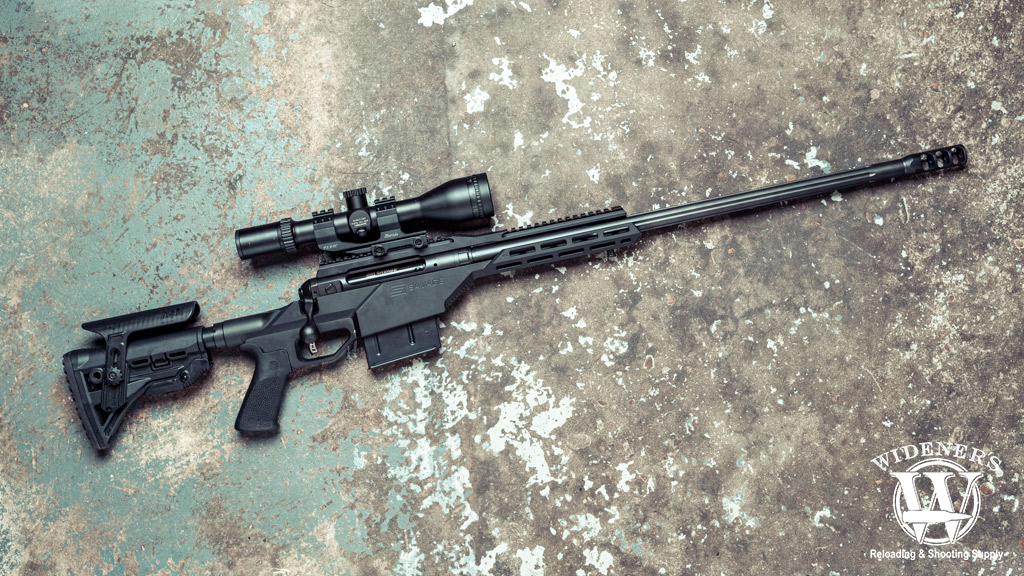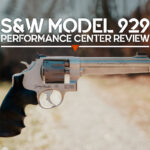

Muzzle devices are an essential firearm accessory we often associate with large caliber rifles. However, these devices can be a great addition to a wide array of firearms. While there are many different types of muzzle devices on the market, one of the most commonly used is known as a muzzle brake.
Despite their popularity, many shooters are unsure what muzzle brakes do or how these small devices can enhance their shooting experience. In order to clear things up, we have created this crash course to muzzle brakes. Below, we discuss what they do and explain how they differ from other muzzle devices. We even outline the pros and cons of muzzle brakes so that you can decide if you want to invest in one.
What Is A Muzzle Brake Anyway?
A muzzle brake is a device that is attached to the end (muzzle) of a rifle barrel. Muzzle brakes are designed to reduce the amount of felt recoil when shooting your weapon. In addition, muzzle brakes can help minimize barrel rise.
Muzzle brakes vary greatly in style, color, and appearance, the majority of them have a cylindrical shape. They are generally around 1-2 inches in length and have an internal diameter that is slightly larger than the barrel. Virtually all muzzle brakes have a series of slots or small holes that are designed to allow gas to escape out of the end of the barrel.
How Does It Work?

A muzzle brake sends the gasses exiting the barrel in different directions, reducing recoil and preventing muzzle rise.
The design of a muzzle brake serves a specific purpose, which is to reduce recoil. The mechanism by which they accomplish this is incredibly simple.
When shooting a firearm without a muzzle brake, the projectile and the gas generated by the gunpowder are pushed straight out of the end of the barrel. This creates a force that drives the stock of the weapon directly into the shooter, which is known as recoil. In turn, the recoil causes barrel rise, which is also known as muzzle jump.
In order to reduce recoil, muzzle brakes redirect the gas in multiple directions. Instead of being expelled in the same general direction as the projectile, the gas now exits the barrel by passing through a series of slots or holes in the muzzle brake.
How To Install
A muzzle brake is attached to a rifle by using the threaded end of the weapon’s barrel. In order to equip your rifle with a muzzle brake, simply screw the device onto the end of the barrel. If your weapon has a threaded barrel, it will almost certainly have some sort of muzzle device or thread protector attached. Naturally, you will have to remove this device before attaching your muzzle brake.
Be sure that the device is not cross-threaded and that it is snug. Otherwise, it may negatively impact the performance of your weapon. Even worse, an improperly attached muzzle brake can become dislodged from the barrel.
Muzzle Brake VS Flash Hider

Muzzle brakes are most commonly used on high-caliber rifles to improve accuracy and increase the speed of follow-up shots.
Now that we have covered the basics of muzzle brakes, let’s see how they stack up against other types of muzzle devices. As noted above, the primary purpose of muzzle brakes is to reduce the amount of recoil that you experience when shooting your weapon. Redirecting the gas generated by your weapon also works to combat barrel rise, which can enhance accuracy. However, these are secondary benefits of muzzle brakes.
Conversely, flash hiders, or flash suppressors, are designed to reduce muzzle flash. Flash hiders may reduce muzzle rise, but they will provide minimal benefits in terms of recoil reduction. Many off-the-rack AR-15s are equipped with flash hiders, as these muzzle devices are extremely cheap to produce.
Flash hiders can best be compared to truck stop food. Sure, it will leave you feeling full for a little while, but you will never truly be satisfied. Come on, what do you expect for an accessory that can be purchased for as little as $10?
On the other hand, the muzzle brake market ranges from fast food quality to a true gourmet restaurant experience. There are options out there for any budget, including some top-quality devices that will significantly reduce recoil and minimize barrel rise.
Muzzle Brake VS Compensator
Whereas the muzzle brake was primarily designed to reduce recoil and only inhibited barrel rise as a secondary effect, compensators do the exact opposite. Compensators were purpose-built for rerouting expelled gasses in a manner that reduces muzzle rise.
Like all things in life, there was a tradeoff with this design change. While compensators are exceptional at eliminating muzzle rise, they only offer minimal recoil reduction benefits. In light of this fact, compensators are best suited when attached to weapons that do not produce a high amount of recoil. Compensators are particularly useful for pistol shooting, as these devices allow shooters to deliver highly accurate follow-up shots.
Muzzle Brake Advantages
There are three primary advantages associated with using muzzle brakes. Most notable is the fact that these devices can drastically reduce recoil, which can be invaluable when shooting large-caliber weapons. Redistributing gas and reducing recoil also has a slight impact on barrel rise. However, if that is your primary goal, then a compensator would be a better buy.
Finally, muzzle brakes can help you shoot more accurately. Less recoil means that it is easier for you to keep your sights set on the target. This allows you to remain in a more stable shooting position, which translates to better shot placement.
Muzzle Brake Disadvantages
Muzzle brakes, and compensators for that matter, create a concussive effect when you fire your weapon. As a result, you won’t be making too many friends at the range. Due to the design of these muzzle devices, the concussive effects are most distinct for individuals that are standing beside you on the firing line.
The other drawback to muzzle brakes is that they can be somewhat expensive, with some devices costing as much as $200 or more. However, I am a firm believer that you get what you pay for. If you want to experience real recoil reduction benefits, invest in a decent-quality muzzle brake from a reputable company.
That does not mean that you have to go out and purchase a top-of-the-line, hand-forged muzzle brake in order to enhance your shooting experience. When selecting your muzzle brake, do a little research and take a close look at the design quality of each device. By doing so, you can ensure that you find the perfect muzzle brake for your specific shooting needs.
Do You Need A Muzzle Brake?

Muzzle brakes come in a variety of different calibers and can also be used in conjunction with certain suppressors.
Muzzle brakes can be a great addition to certain firearms, particularly if you need help managing recoil. It’s an easy way to improve the performance of your weapon without breaking the bank. The modification of a weapon with a muzzle brake can normally be done without the need for a gunsmith. In certain cases, it also gives you the ability to quickly mount a suppressor too. With many options on the market, finding the right muzzle brake for your needs shouldn’t be difficult.


